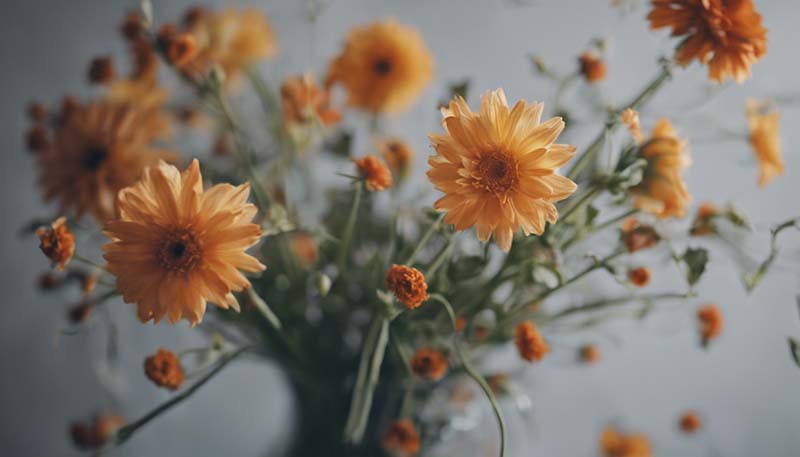Seasonal Flowers in Still Life Photography: Creating Artistic Compositions
Photography and Inspiration | 2024-07-12
Seasonal Flowers in Still Life Photography: Creating Artistic Compositions
Still life photography is a genre where inanimate objects are arranged in a composition to be photographed. Seasonal flowers are a popular subject in still life photography due to their natural beauty and the way they can convey the essence of a particular season. This article explores how to create artistic compositions with seasonal flowers, capturing their transient beauty and the changing moods of the year.
The Art of Composition
Composition is a critical aspect of still life photography. It involves arranging elements within a frame to create a visually appealing and meaningful image. When working with seasonal flowers, consider the following compositional techniques:
- Rule of Thirds: Divide your frame into nine equal parts using two equally spaced horizontal lines and two vertical lines. Place the main elements of your composition along these lines or at their intersections to create balance and interest.
- Symmetry and Asymmetry: Both can be effective. Symmetry can create a sense of order and harmony, while asymmetry can add tension and energy to your composition.
- Depth: Use elements in the foreground, middle ground, and background to create a sense of depth in your still life compositions.
- Leading Lines: Use the natural lines of the stems or the curves of petals to lead the viewer's eye through the image.
- Patterns and Repetition: Grouping flowers together can create a pattern that is pleasing to the eye and adds a sense of rhythm to your composition.
Choosing the Right Flowers
Just as each season has its own character, so do the flowers that bloom during that time. When selecting flowers for your still life, consider the following:
Advertisement
- Spring: Choose flowers like tulips, daffodils, and cherry blossoms to capture the essence of renewal and growth.
- Summer: Bright, bold flowers such as sunflowers, peonies, and roses can convey the vibrancy and warmth of summer.
- Autumn: Opt for flowers with rich, warm colors and textures like dahlias, chrysanthemums, and marigolds to reflect the harvest season.
- Winter: Winter compositions can be created with evergreen branches, holly, or dried flowers to evoke the feeling of the cold season.
Lighting and Mood
Lighting plays a significant role in setting the mood of your still life. Experiment with different light sources and directions:
- Natural Light: Use soft, diffused natural light from a window to create a warm and inviting atmosphere.
- Artificial Light: Studio lights or a single lamp can help you control the direction and intensity of light, allowing for more dramatic effects.
- Backlighting: Light from behind the flowers can create a beautiful rim light and make the petals appear translucent.
- Side Lighting: This can emphasize texture and create strong shadows for a more contrasty and moody look.
Experimenting with Props
Props can add context and tell a story in your still life compositions. When choosing props, consider the following:
- Vases and Containers: Select vases that complement the form of the flowers and the overall style of your composition.
- Textures: Introduce items with different textures, such as wooden boards, fabric, or old books, to add depth and contrast.
- Reflective Surfaces: Use mirrors or metallic objects to create interesting reflections and add a sense of depth.
- Seasonal Items: Incorporate items that are associated with the season, such as autumn leaves, winter snow globes, or spring seeds.
Post-Processing
Post-processing is an essential step to enhance the colors, contrast, and sharpness of your images. Consider the following:
- Color Balance: Adjust the temperature and tint to enhance the natural colors of the flowers and the overall mood of the image.
- Selective Focus: Use depth of field to focus on specific flowers and blur the background or foreground for a more professional look.
- Sharpness and Clarity: Enhance the sharpness and clarity of the image to make the details of the flowers stand out.
- Cropping: Crop your image to improve the composition or to focus on the most important elements.
Conclusion
Seasonal flowers offer a wealth of inspiration for still life photography. By mastering composition, choosing the right flowers, playing with lighting, experimenting with props, and understanding post-processing, you can create stunning, artistic compositions that capture the beauty and essence of each season. Remember, the key to great still life photography is patience and experimentation. Keep trying different setups and techniques until you achieve the look and feel you desire.

Happy shooting!
Comments